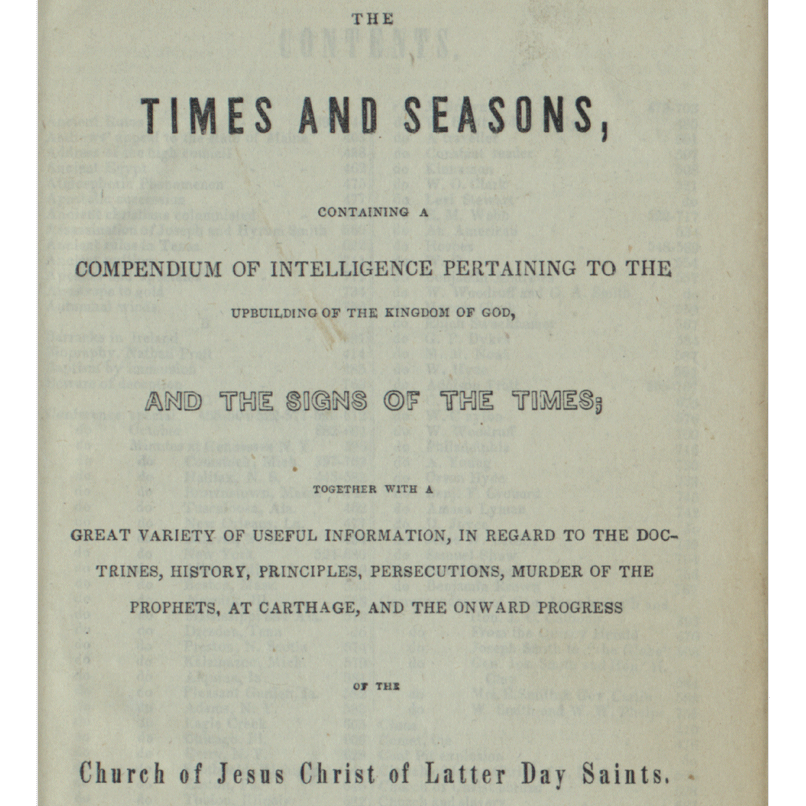Blog
Changing of the Guard at Dialogue
November 4, 2015
Cross posted at Times and Seasons
Dialogue: A Journal of Mormon Thought gets a new editor every five or six years, and that time is now upon us. As a subscriber and supporter, I wanted to get a sense of where the incoming editor, Boyd Jay Petersen, is going to take the journal, so I bought a copy of his Dead Wood and Rushing Water: Essays on Mormon Faith, Culture, and Family(Greg Kofford Books, 2013) to get the lowdown. After all, Kristine is a hard act to follow. After reading the book, I am optimistic. To offer a few comments, I will highlight one essay from each of the three sections in the book.
Faith. Chapter 5, “LDS Youth in an Age of Transition,” was originally a 2011 Dialogue article reviewing two books reporting survey data about the beliefs and religious activity of Christian and LDS youth. The review is also a response of sorts to an earlier published essay, “Soulcraft 101: Faith, Doubt, and the Process of Education,” in which Petersen reflects on the interactions he had with students while teaching Mormonism at UVU. Most online conversations about LDS youth are more pessimistic than warranted by the facts. Here is encouraging commentary offered by Petersen in Chapter 5:
Souls in Transition provides abundant good news about LDS youth. Mormons had a higher retention rate than any other denomination as young people transitioned into adulthood …. LDS youth have the highest rates of church attendance (60 percent), personal prayer (54 percent), Sabbath observance (71 percent), and daily scripture reading (23 percent). They exhibited somewhat fewer risky behaviors like substance abuse or premarital sex. They are less likely to doubt God’s existence and have fewer doubts about religion in general. (p. 56)
Culture. In Chapter 11, “Escape from Groundhog Day: Mormon Literary Creation and the Cycle of the Eternal Return,” Petersen offers observations on the Mormon literary scene. This was a 2010 presidential address to the Association for Mormon Letters. Naturally, the discussion devoted a couple of paragraphs to Eugene England’s contribution. Here is one line to ponder:
England was that rarest and most dangerous of ideologues, a member of the Radical Middle. (p. 114)
That’s a useful concept for a Dialogue editor to embrace. I would place that Radical Middle somewhere between radical critics and mainstream orthodoxy. Like the fully orthodox, radical middletons have both feet (or at least one foot) firmly within the Mormon fold, but like radical critics the radical middletons feel compelled to examine and discuss the full spectrum of Mormon experience, troubling issues as well as praiseworthy achievements. If you aren’t at least a little bit radical, you probably won’t have anything interesting to say. If you aren’t at least in the middle, you may lose credibility with many LDS readers. I think Radical Middle describes the position of many Bloggernacle authors.
Family. Chapter 20, “What I Learned about Life, the Church, and the Cosmos from Hugh Nibley,” recounts some of Petersen’s interactions with Hugh Nibley. As Nibley’s biographer and as his son-in-law, Petersen has plenty of material to work with. That link to Nibley also provides some editorial traction with mainstream Mormons and with the LDS apologetic community, for whom Nibley remains an inspirational figure. Really, is there any literate Mormon who hasn’t had a personal encounter with Nibley via one or many of his essays or books?
One of the things that made Hugh’s writing so much fun was the new insights he showed us. Many of these allowed us to both take the texts seriously but abandon silly ideas that we may have learned in Primary. … Hugh had the ability to move us as readers into a more “mature” world of scripture study. While his answers were not always perfect, he set an example of not only taking the scriptures seriously, but of also taking science seriously. He showed us that we didn’t need to compromise either our faith or our brains. (p. 207)
So the book of essays is worth reading and the journal is worth subscribing to. Reader comments on the book or the journal are welcome. And Nibley — there is always something to say about Hugh Nibley.


 Back to all blog articles
Back to all blog articles

